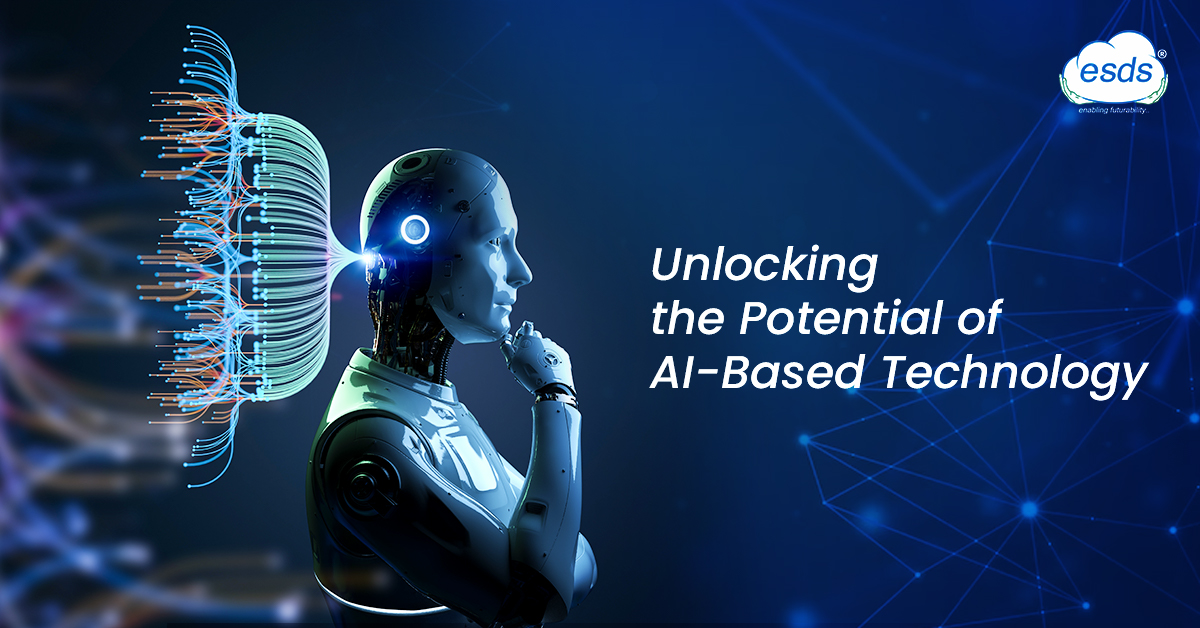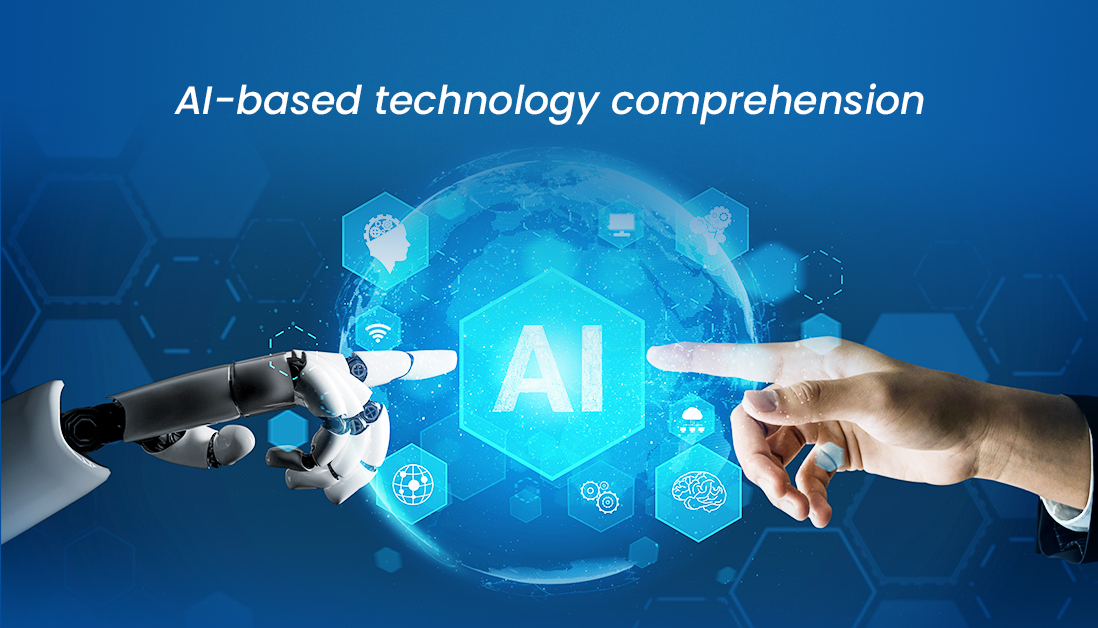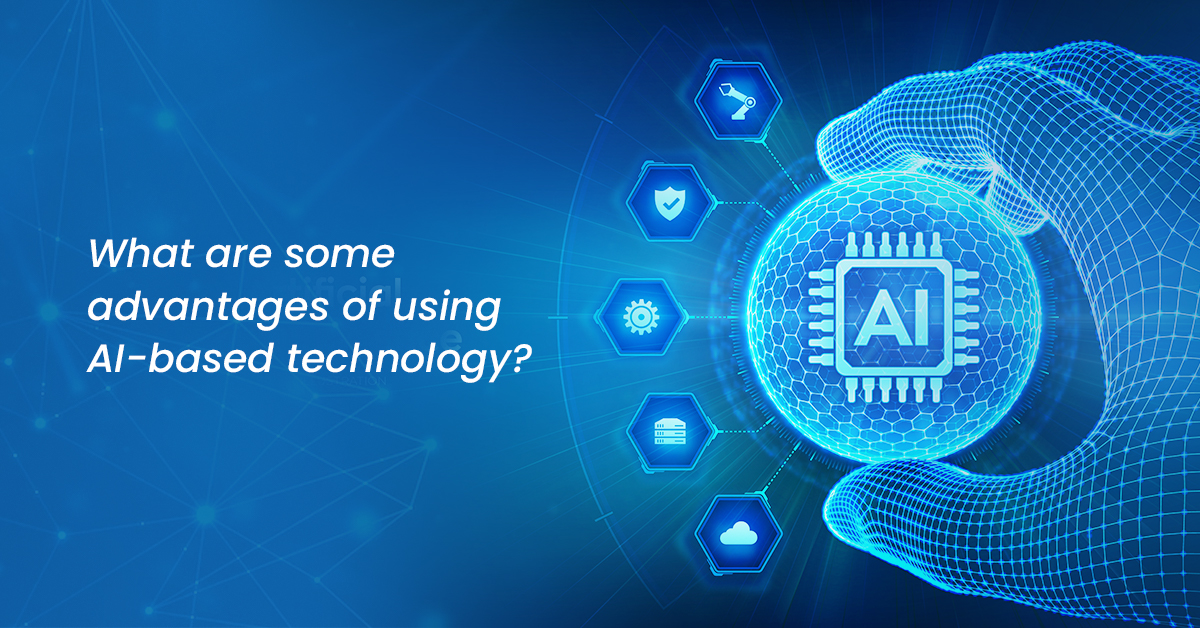Unlocking the Potential of AI-Based Technology

4 billion+ devices already work on AI-powered voice assistants (source: connect.comptia.org). This clearly suggest how widely AI-based technology is being used. In recent years, AI-based technology has revolutionized how businesses operate, with its ability to streamline operations, enhance efficiency, and improve decision-making. Unlocking the potential of AI-based technology can give organizations a competitive advantage, enabling them to make better-informed decisions, improve productivity, and reduce costs. This article will explore the benefits of AI-based technology and how it can be effectively utilized to drive business growth and success.
What is Artificial Intelligence?
The simulation of human intelligence processes by machines, particularly computer systems, is known as artificial intelligence. Expert systems, natural language processing, speech recognition, and machine vision are examples of AI applications.
Artificial intelligence-focused cognitive abilities
Learning: This element of AI programming is concerned with gathering data and developing rules for turning it into usable information. The rules, known as algorithms, teach computing equipment how to execute a certain task step-by-step.
Reasoning: This part of AI programming focuses on selecting the best algorithm to achieve results.
Self-correction: This element of AI programming is intended to fine-tune algorithms to produce the most accurate results constantly.
Creativity: This branch of artificial intelligence employs neural networks, rules-based systems, statistical approaches, and other AI techniques to generate new images, text, music, and ideas.
Understanding AI-Based Technology

AI, or Artificial Intelligence, is a technology that enables machines to perform tasks that would typically require human intelligence, such as learning, reasoning, and problem-solving. AI-based technology is based on machine learning, which involves teaching machines to learn from data and improve their performance over time. This technology can be applied to various industries, including finance, healthcare, marketing, and customer service.
What are some examples of AI-based technology, and how is it applied today?
- Automation: When combined with AI technologies, automation tools can increase the volume and variety of jobs completed. Robotic process automation (RPA) is an example of software that automates repetitive, rules-based data processing operations that humans previously performed. RPA may automate larger amounts of company jobs when paired with machine learning and new AI tools, allowing RPA’s tactical bots to pass along AI intelligence and adapt to process changes.
- Machine Learning: This is the science of making a computer act without programming. Deep learning is a subset of machine learning that, in simplest terms, may be thought of as predictive analytics automation.
- Machine Vision: This technology enables a machine to see. Machine vision uses a camera, analog-to-digital conversion, and digital signal processing to gather and analyses visual data. It is frequently compared to human vision; however, machine vision is not limited by biology and can, for example, be programmed to see through walls.
- NLP – Natural Language Processing: A computer programme processes human language in this manner. One of the oldest and most well known applications of NLP is spam detection, which examines the subject line and body of an email to determine if it is spam or not. Machine learning is at the heart of current approaches to NLP. Text translation, sentiment analysis, and speech recognition are examples of NLP tasks.
- Robotics: This engineering discipline focuses on the design and manufacture of robots. Robots are frequently used to accomplish jobs that are difficult or inconsistent for people to perform.
- Autonomous vehicles: Autonomous vehicles use a combination of computer vision, image recognition, and deep learning to develop automated skills for driving a vehicle in a specific lane while avoiding unforeseen obstacles such as pedestrians.
- Text, image, and audio generation: Generative AI algorithms, which generate multiple sorts of media from text prompts, are widely used in organizations to generate a seemingly infinite range of content types ranging from photorealistic paintings to email responses and screenplays.
Benefits of AI-Based Technology

There are numerous benefits of AI-based technology, including:
- Enhanced Decision Making
One of the most significant benefits of AI-based technology is its ability to provide businesses with valuable insights that can be used to make better-informed decisions. By analyzing large amounts of data, AI can identify patterns and trends humans might miss, enabling businesses to make more accurate predictions and better understand their customers’ needs.
- Increased Efficiency
AI-based technology can also streamline operations and improve efficiency. For example, AI-powered chatbots can provide customers with instant support, reducing the workload for customer service teams. Similarly, AI-based scheduling software can optimize employee schedules, reducing the time and effort required to manage schedules manually.
- Cost Savings
Another significant benefit of AI-based technology is its ability to reduce costs. By automating repetitive tasks and streamlining operations, businesses can save time and money, freeing up resources to focus on more strategic initiatives.
- Improved Personalization
AI-based technology can also enhance the customer experience by providing personalized recommendations and tailored content. For example, AI-powered product recommendations can help customers find products that match their preferences, while AI-powered chatbots can provide personalized support based on a customer’s previous interactions with a company.
Effectively Utilizing AI-Based Technology
To unlock the full potential of AI-based technology, businesses need to implement it effectively. Here are some tips for effectively utilizing AI-based technology:
- Identify Business Goals
Before implementing AI-based technology, businesses need to identify their goals and objectives. This will help them determine which areas of their operations would benefit most from AI-based technology and how it can be used to achieve specific business outcomes.
- Choose the Right Technology
Numerous AI-based technologies are available, and businesses need to choose the right one based on their specific needs and requirements. For example, if a company wants to automate customer service, it might consider implementing an AI-powered chatbot.
- Focus on Data Quality
AI-based technology relies on high-quality data to provide accurate insights and predictions. Therefore, businesses need to ensure that they have access to clean, reliable data that can be used to train AI models effectively.
- Involve Experts
Implementing AI-based technology requires expertise and knowledge. Therefore, businesses should involve experts, such as data scientists or AI consultants, to ensure that the technology is implemented effectively and delivers the desired results.
- Monitor Performance
To ensure that AI-based technology delivers the desired outcomes, businesses must regularly monitor its performance. This will enable them to identify any issues or areas for improvement and make necessary adjustments.
In Conclusion
Unlocking the potential of AI-based technology can provide businesses with a significant competitive advantage, enabling them to make better-informed decisions, improve efficiency, and reduce costs. By following the tips outlined in this article, businesses can effectively implement AI-based technology and drive business growth and success.
- Decoding Generative AI: A Comprehensive Guide to Gartner’s Impact Radar - January 2, 2024
- 5 Best Practices for Cloud Security in 2024 - December 29, 2023
- 10 Best Machine Learning Ops Strategies for Cloud Environments in 2024 - December 29, 2023
